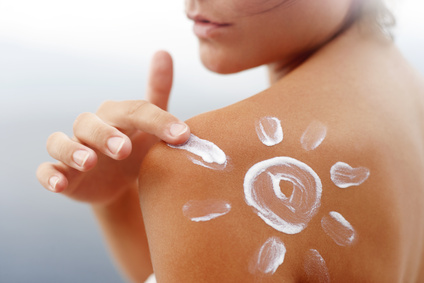Protect Your Skin’s Health and Youthfulness This May and Year-Round
Skin cancer is the most common type of cancer in America today. The American Cancer Society estimates that one person per hour dies from skin cancer. However, it’s also one of the more preventable types of cancers. This May, join Hamilton Dermatology in protecting and caring for your skin.
What are the different types of skin cancer?
Malignant melanoma and non-melanoma are the two main types of skin cancer. Melanoma is the most dangerous form of skin cancer, but it is also the least common form. Melanoma begins in the melanocyte skin cells that cause your skin to tan.
The two common types of non-melanoma skin cancer are basal cell carcinoma and squamous cell carcinoma. Non-melanoma skin cancer is usually found on the face, head, neck, arms and hands. However, it can occur on other parts of the body as well. Basal cell skin cancer usually happens on parts on the skin that get regular sun exposure, such as the face. Basal cell cancer grows slowly and doesn’t usually spread to other parts of the body. It is the most common type of skin cancer. Squamous cell skin cancer is found on parts of the skin that get sun exposure, but isn’t strictly found in those places. It can spread to lymph nodes and organs.
What are the skin cancer risk factors?
There are several risk factors that may affect your chances of getting skin cancer, such as skin color, a weakened immune system, age, genetics, where you live, and family history. Some risk factors can be controlled while some can’t. However, a major risk factor for getting skin cancer is exposure to ultraviolet (UV) radiation – more than 90% of skin cancer is caused by excessive sun exposure. Tanning booths and lamps are another source of UV radiation.
What are the symptoms of skin cancer?
If you notice any of the following symptoms, make an appointment as soon as you can. A dermatologist is trained to spot and identify skin irregularities. The quicker skin cancer is detected, the more treatable it is.
- A red lump (spot or mole) that is firm
- A small lump (spot or mole) that is shiny, waxy, pale in color, and smooth in texture
- Flat, scaly areas of the skin that are red or brown
- Rough and scaly patches on the skin
- A sore or spot that bleeds or becomes crusty
- Sores that don’t heal
- Any suspicious new growth
Why is it important to protect against sun exposure?
According to the National Council on Skin Cancer Prevention, there are more than 3.5 million new cases of skin cancer in America every year, and 2.2 million people are treated for this quite preventable disease. In adults between the ages of 20 and 39, melanoma is the second most common invasive cancer.
Responsible sun exposure also has fantastic benefits for the appearance of your skin, including fewer wrinkles and a more even skin tone. Prolonged exposure to the sun’s UV radiation can cause damage similar to aging, including thinner and less elastic skin, blemishes, sun freckles, brown spots, and wrinkles.
How can I protect my skin?
There are many easy ways you can help protect your skin from UV rays and keep it looking its best, including:
- Use a broad-spectrum sunscreen with zinc and SPF 30 or higher to protect against both UVA and UVB radiation – regardless of your age. Apply 15 minutes before exposure to the sun, and reapply often.
- Avoid tanning, either in the sun or in a tanning bed. Tanning beds’ high-pressure sunlamps can deliver as much as 12 times the annual UVA dose as natural exposure.
- Stay in shady areas between 10 a.m. and 4 p.m., when the sun’s rays are the strongest.
- Cover up – wear protective clothing like long sleeves, a hat, and sunglasses. Many items of activewear and regular clothing now have added SPF protection.
- Beware of reflective surfaces such as sand, snow and water. Ultraviolet rays can be reflected off these surfaces and cause damage to your skin.
- Check your skin often for any irregularities, and visit your dermatologist or family doctor if you notice anything out of the ordinary.
May 22, 2015 is Don’t Fry Day
All Americans are encouraged to take part in Don’t Fry Day this year, an initiative of the National Council on Skin Cancer Prevention. On the Friday before Memorial Day, keep the health and appearance of your skin in mind and follow the skin protection tips above. You can still enjoy the sun and get your Vitamin D, but do it safely and your skin will thank you.

